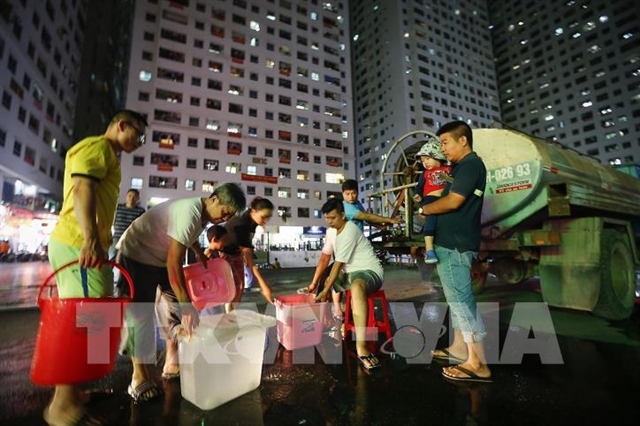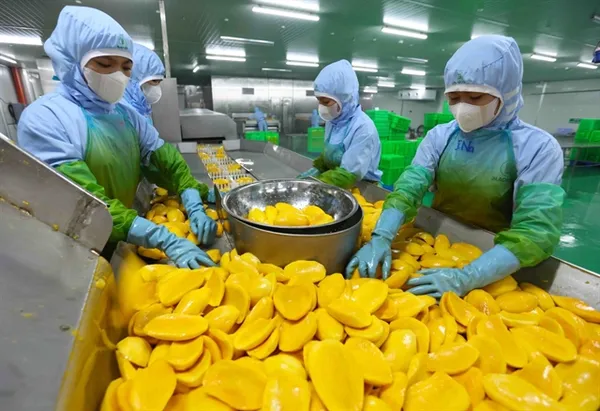 Society
Society

Prime Minister Nguyễn Xuân Phúc has asked ministries, agencies and stakeholders to complete legal frameworks and adopt new models and new technologies to ensure sufficient clean water.

|
| Free clean water was provided to people in Linh Đàm Urban Area in Hà Nội last October as water supplied to the area by Đà River Clean Water Joint Stocks Company was found to be contaminated. VNA/VNS Photo Trọng Đạt |
HÀ NỘI – Prime Minister Nguyễn Xuân Phúc has asked ministries, agencies and stakeholders to complete legal frameworks and adopt new models and new technologies to ensure sufficient clean water.
In a directive issued on August 28, PM Phúc emphasised the importance of clean water and urged ministries, agencies, organisations and individuals to improve awareness and take actions to protect water resources and supply works.
Besides legal framework improvement, he also called for research, new investment models and new technologies to manage, operate and monitor water production and supply.
He assigned the Ministry of Construction to develop a bill on clean water management next year.
The ministry was also asked to develop a project on State water management with the private sector offering more opportunities to invest in the water sector.
The participation of private investors in water production and supply projects is expected to solve the monopolies of water supply in some areas.
The Ministry of Agriculture and Rural Development was asked to supervise clean water supply in rural areas and the safety of dams and reservoirs.
The Ministry of Natural Resources and Environment was told to review the implementation of Decree 43/2015/NĐ-CP on establishing and managing water resource protection corridors.
The environment ministry was told to work with other ministries and agencies to tighten inspections to find and punish those that harm resources that are used to produce clean water.
Water resource data will be collected and shared among ministries and agencies and information on water quality will also be shared to clean water production and supply companies.
According to the International Water Resources Associations, Việt Nam is now in the group of countries that face a shortage of water with low average domestic water amount per head – only 3,840 cu.m per person per year while the global rate is 4,000 cu.m per person per year.
The Ministry of Natural Resources and Environment estimates Việt Nam’s average domestic water amount will half by 2025.
Statistics from the environment ministry and health ministry show about 9,000 people in Việt Nam die yearly because of poor hygiene and water resources and about 200,000 people have cancer relating to water pollution.
According to a study by the World Health Organization, lack of clean water and an unhygienic environment caused 44 per cent of Vietnamese children to get worm infections and 27 per cent of children under five years old to suffer from malnutrition.
About 21 per cent of the country’s population uses arsenic-contaminated water.
Due to these figures, the WHO rated Việt Nam as a country with alarming water resource security, especially in rural areas.
Population pressure, poor public awareness on the importance of using clean water, insufficient policies for water resource security as well as ineffective co-operation among agencies in managing and monitoring the water quality are blamed for the situation. VNS




